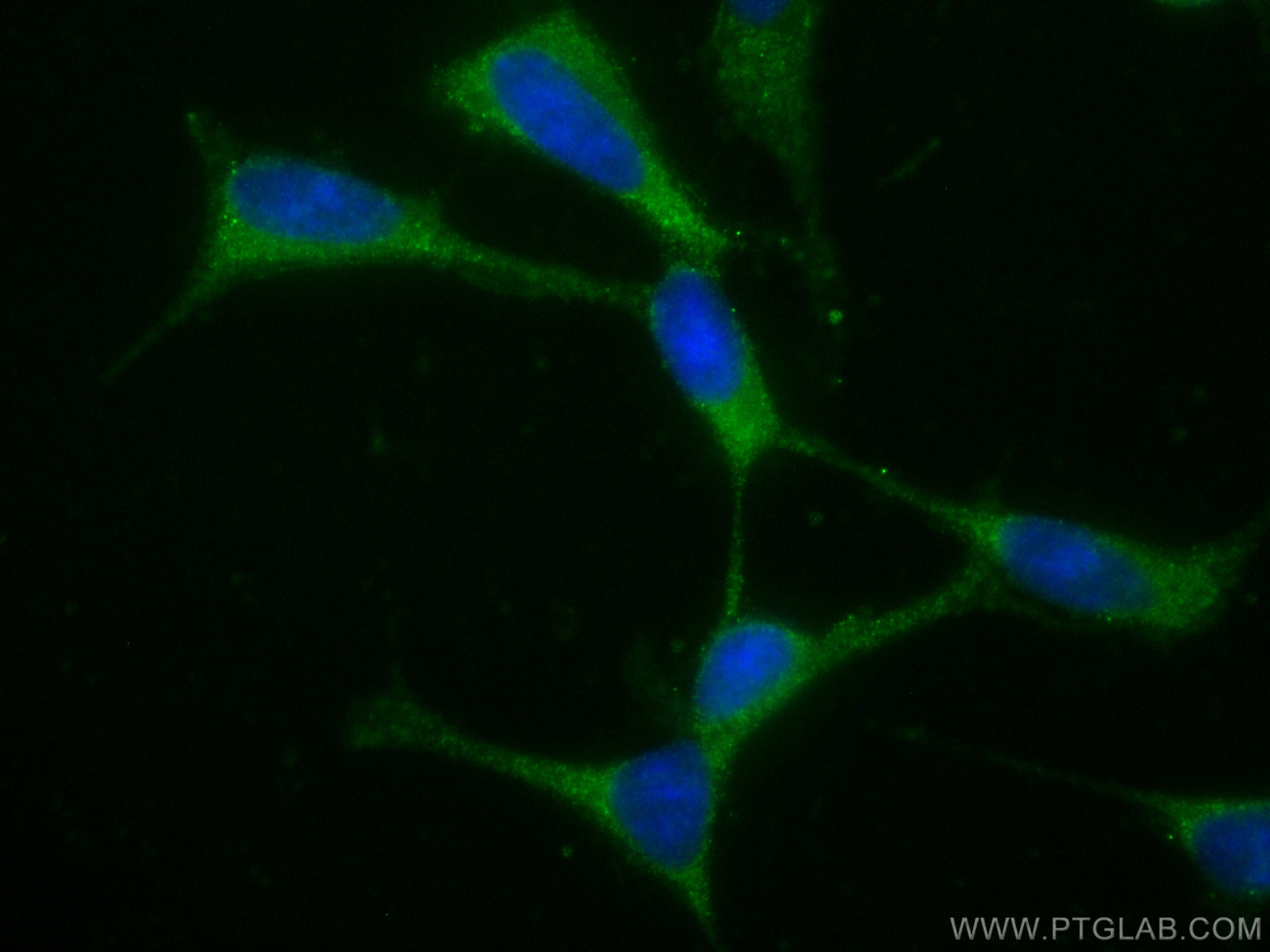CoraLite® Plus 488-conjugated Huntingtin Polyclonal antibody
Huntingtin Polyclonal Antibody for IF
Host / Isotype
Rabbit / IgG
Reactivity
human, mouse
Applications
IF
Conjugate
CoraLite® Plus 488 Fluorescent Dye
Cat no : CL488-27206
Synonyms
Validation Data Gallery
Tested Applications
| Positive IF detected in | SH-SY5Y cells |
Recommended dilution
| Application | Dilution |
|---|---|
| Immunofluorescence (IF) | IF : 1:50-1:500 |
| Sample-dependent, check data in validation data gallery | |
Product Information
CL488-27206 targets Huntingtin in IF applications and shows reactivity with human, mouse samples.
| Tested Reactivity | human, mouse |
| Host / Isotype | Rabbit / IgG |
| Class | Polyclonal |
| Type | Antibody |
| Immunogen | Huntingtin fusion protein Ag25922 相同性解析による交差性が予測される生物種 |
| Full Name | huntingtin |
| Calculated molecular weight | 348 kDa |
| GenBank accession number | NM_002111 |
| Gene symbol | HTT |
| Gene ID (NCBI) | 3064 |
| Conjugate | CoraLite® Plus 488 Fluorescent Dye |
| Excitation/Emission maxima wavelengths | 493 nm / 522 nm |
| Form | Liquid |
| Purification Method | Antigen affinity purification |
| Storage Buffer | PBS with 50% Glycerol, 0.05% Proclin300, 0.5% BSA, pH 7.3. |
| Storage Conditions | Store at -20°C. Avoid exposure to light. Stable for one year after shipment. Aliquoting is unnecessary for -20oC storage. |
Background Information
HTT(huntingtin), also named as HD and IT15, belongs to the huntingtin family. HTT may play a role in microtubule-mediated transport or vesicle function. Defects in HTT are the cause of Huntington disease (HD) which is an autosomal dominant neurodegenerative disorder characterized by involuntary movements (chorea), general motor impairment, psychiatric disorders and dementia.
Protocols
| Product Specific Protocols | |
|---|---|
| IF protocol for CL Plus 488 Huntingtin antibody CL488-27206 | Download protocol |
| Standard Protocols | |
|---|---|
| Click here to view our Standard Protocols |


